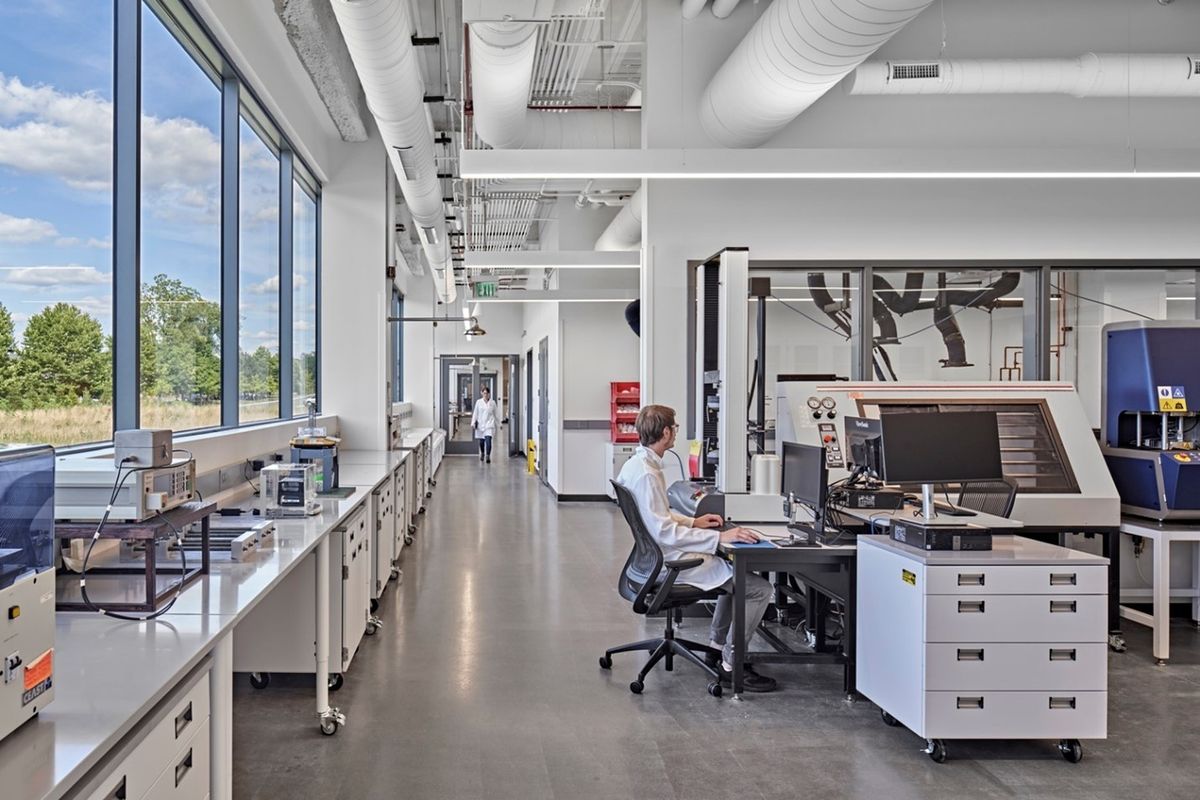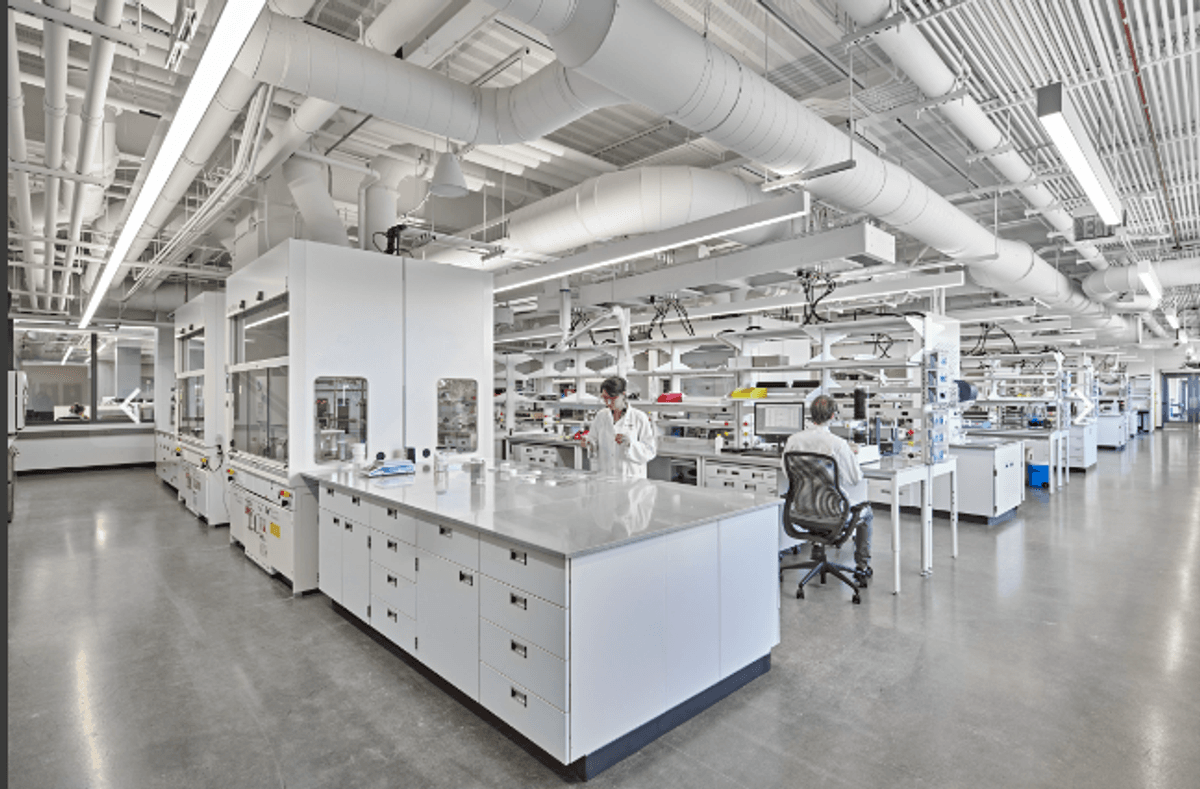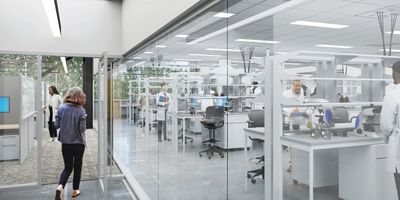Accommodating Automation Technologies in an Existing Lab
Implementing automation requires collaboration and thoughtful planning
Introducing automation, whether via robotics, smart lab infrastructure, or another tool can enhance research speed and precision. Automated elements streamline routine tasks like sample handling and data analysis, freeing up researchers for more complex work. When creating a new lab environment or updating an existing one, the project must be planned with these tools in mind to be successful. However, the ability to incorporate tools that have not even been invented yet smoothly and effectively into that same lab five years from now is just as essential.
No one has a crystal ball, but planners and designers play a crucial role in creating an adaptive and flexible lab environment that can change to harness these tools, and the ones that follow them, successfully. For lab managers, creating partnerships with experienced lab planners and collaborating early will create substantial advantages in the flow and useability of their lab and their ability to introduce, evolve, and replace their automated equipment and processes.
Collaboration first
Before diving into the specifics of any lab design, a laboratory planner must understand the nature of the research to be conducted. This requires a deep and collaborative dialogue with the lab manager. Different scientific disciplines have varying requirements; planners need to understand the science you are planning to do today as well as what you may do in the future. Understanding the long- and short-term goals for the lab is critical for establishing the right strategies to maximize the longevity and the return on the investment you are making in your lab.

Throughout the design process, the lab planner will be the nexus for collaboration between the engineers, architects, and automation specialists. By asking the right questions and listening carefully, a lab planner can lead the entire team to meaningfully investigate potential automation solutions and realistically consider factors like scalability, future flexibility, and compatibility with the existing infrastructure. As artificial intelligence evolves, it’s likely that labs will deepen their investments in robotics to perform repetitive and/or dangerous tasks. Introducing and leveraging these tools to greatest effect requires the space design to be flexible enough to accommodate them. Ensuring that diverse perspectives are heard, and the future considered, will lead to more robust and holistic lab designs.
Integrating the tools
Bringing in automation or automated systems (often via robotics) in clinical testing lines or research assays requires in-depth involvement with mechanical, electrical, and plumbing (MEP) engineering team members. It does you no good to have a robotic automated system in one location if in five or ten years you need it somewhere else, and your electrical infrastructure cannot support the move. Selecting a lab planner with in-house engineering team members can yield future benefits here. It takes careful planning to determine where robotic systems (and their supporting services) should go, how to keep everyone safe, and how to make sure they interface with other lab instruments. As such, other specialists such as environmental health and safety (EHS) experts and equipment installation teams should be actively involved with planning to ensure that the robots are placed in the safest and most effective locations. Picture a well-choreographed dance of lab equipment: implementing robotics is all about creating a smooth and efficient workflow, and such choreography is only possible with facility engineers, safety specialists, and equipment installation teams working collaboratively to define the moves.
Building automation opportunities
Emerging technologies and automation are also appearing on the infrastructure side of the lab as well. Monitoring particulates, air flow, lighting levels, water purity, humidity, and other environmental conditions are all becoming more prevalent. In the built environment, design teams should use these tools to modularize the lab infrastructure. This will increase the adaptability for the future, create a more reliable maintenance structure, and alert both lab staff and maintenance crews when something is outside of control limits. Systems are regularly or constantly monitored, giving owners of cGMP or other sensitive environments the reassurance that the condition in the space will be within tolerance of the research or production requirements. In addition, these automated, and potentially AI-driven, systems can anticipate issues, schedule repair, and re-balance system controls. Lab planners are central to these discussions, often serving as the linkage between MEP engineers, designers, and users/clients.

Optimizing resources
An essential part of integrating new technology (be it robotics, automated systems, or traditional equipment) is incorporating sustainable design principles to ensure that the lab spaces are not only adaptable to evolving research needs and technological advancements, but also highly efficient. Laboratories, being dynamic environments, must seamlessly integrate automation without compromising the flexibility of the space: robust infrastructure, modular and moveable furnishings, and layouts that allow easy reconfiguration of equipment and workflows all promote flexibility and sustainability by minimizing resource waste and energy consumption.
This forward-thinking, sustainable approach guarantees that the laboratory remains on the forefront of scientific research while minimizing the need for costly renovations and reducing its ecological footprint.
No matter the type of automation being introduced or upgraded, the result should always be that the laboratory environment is safe, effective, resource efficient, and adaptive to change.


